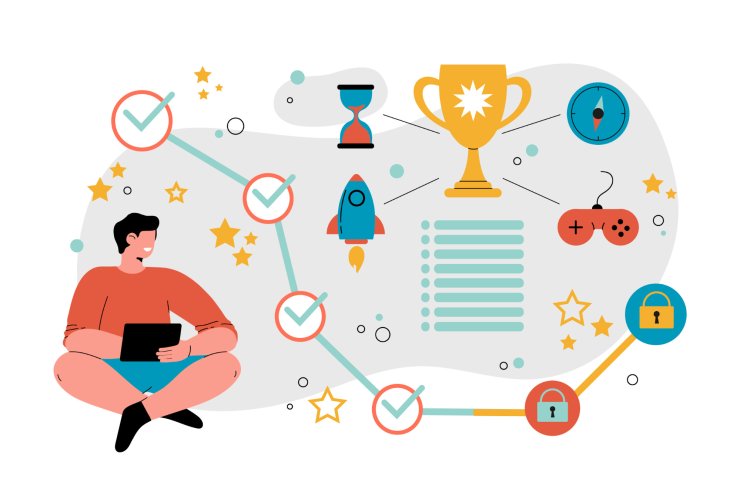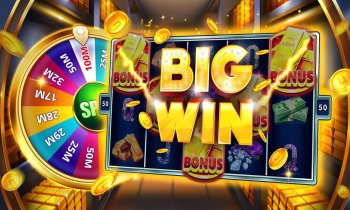Table of Contents
Multimedia entertainment has witnessed a tremendous surge in popularity and adoption with technological advancements. Over the past few decades, interactive mediums such as video games and virtual reality (VR) have exploded in popularity, pushing the boundaries of user engagement and immersive experiences.
One of the most critical factors contributing to this seismic shift in the sector is the concept of 'gamification'. For instance, in the early stages of the internet, one of the first forms of online interactive entertainment could be found on platforms presenting casino reviews.

The Dawn of Gamification
Traditionally, games were merely recreational pastimes for leisure. However, with the arrival of gamification, these activities evolved into robust avenues for learning, customer engagement, user retention, and more.
Initially observed on online gaming and betting platforms, users would consult online casino thoughts before choosing their preferred platform.
Akin to this, as multimedia platforms incorporated game-like features to increase user interaction and provide more immersive experiences, gaming elements started seeping into various sectors, transforming the landscape of multimedia entertainment as we know it.
Gamification in Various Media Formats
Video Games
- Emergence: Video games were among the first media mediums to adopt gamification, with arcade games experiencing a boom in the latter half of the 20th century. The growth of home consoles and PCs further solidified their status.
- Advancement: With the arrival of the internet, multiplayer gaming and online communities grew. The rise of the eSports phenomenon legitimized video gaming as a serious form of entertainment.
- Current Scenario: With advancements in technology, video games have turned highly sophisticated, boasting realistic graphics, complex narratives, and engaging gameplay.
Mobile Games
- Emergence: Post-2007, with the release of the iPhone, the mobile games market has flooded with a wide range of games, from simple puzzles to complex strategy and adventure games.
- Advancement: The advent of internet connectivity and social media integration in mobile games boosted their popularity immensely. The freemium model became a popular monetization strategy, where the game is free to play with optional in-app purchases.
- Current Scenario: Mobile gameplay and AR games like Pokemon Go have become ubiquitous with increased smartphone penetration.
VR/AR Experiences
- Emergence: Virtual Reality (VR) and Augmented Reality (AR) games have emerged in recent years, offering immersive gaming experiences that were unimaginable a few decades ago.
- Advancement: VR Headsets like Oculus Rift and HTC Vive allow gamers to step into virtual worlds, with AR technology blending reality with game elements through devices like Microsoft’s HoloLens.
- Current Scenario: With the ongoing advancements in technology, VR/AR gaming is slowly becoming mainstream, providing engaging and immersive experiences.
The Gamification Spectrum: Beyond Entertainment
While the inception of gamification was rooted in entertainment mediums, its influence has extended significantly beyond this realm.
Many non-entertainment sectors have started leveraging the power of gamification to improve their processes, provide better engagements, and create more personalized experiences.
Education
Interactive and game-based learning has been a transformative force in education, adding novel ways to supplement traditional teaching methods.
- User Engagement: Gamification techniques in education platforms increase user engagement by making learning fun and interactive. Applications such as Kahoot! and Duolingo utilizes gamified quizzes and language learning games to encourage regular practice.
- Student Motivation: Gamification taps into students' innate drive for achievement and competition, motivating them to perform better. Leaderboards, badges, and progression tracking can significantly boost students' enthusiasm and focus.
- Experiential Learning: AR/VR-based gamified learning allows students to explore subjects through immersive experiences. For example, exploring ancient civilizations or understanding complex scientific concepts becomes more engaging.
Marketing
Brands from various sectors have embraced gamified methods to boost customer engagement, loyalty, and retention.
- Engagement Boost: By introducing game elements like challenges, goals, and rewards, brands increase customer interactions with their products or services. For example, Starbucks uses a rewards program where customers earn points for each purchase, motivating customers to make repeat purchases.
- Increased Loyalty: Gamified loyalty programs nurture long-term customer relationships. Gamified elements like progress bars, achievements, and tiers can inspire customers to engage more with the brand to attain higher rewards.
- Educational Marketing: Through gamified experiences, consumers can learn about the brand's products or services in a fun and engaging manner. This tactic can significantly enhance brand recognition and positive association.
Workforce Management
Businesses have begun to employ gamified platforms and apps to enhance their employees' productivity and morale.
- Productivity Enhancement: Gamification can transform routine tasks into competitive games or challenges that motivate employees to improve their productivity.
- Employee Training: Interactive gamified training programs promote active learning and help employees better understand their roles, making the learning process more engaging and efficient.
- Team Building: Gamified initiatives can foster teamwork and camaraderie within the organization. Group-based challenges or competitions can improve coordination, communication, and team cohesion.
Health & Fitness
The health and fitness sector has seen a significant rise in gamification, making workouts more enjoyable and promoting a healthier lifestyle.
- Fitness Motivation: Fitness apps with gamified features like customized challenges, progress tracking, and rewards can incentivize users to maintain regular workouts and healthy habits.
- Social Features: Many fitness apps incorporate social elements, allowing users to share their progress, participate in joint challenges, or compete in leaderboards — fostering a sense of community.
- Habit Building: Gamification can make health habit formation intuitive and engaging. For example, apps like "Zombies, Run!" turn exercise into a gripping survival game, making running more attractive and engaging to the users..
The Future of Gamification
Given its rapid advancement and increasingly widespread application, the future of gamification looks bright. A primary driver facilitating this growth is the continual advancements in technology, enhancing the sophistication of games and widening the possibilities of gamification.
Merging gamification with artificial intelligence (AI) and machine learning (ML) will open up new possibilities to deliver personalized experiences. Utilizing blockchain technology would also secure transactions and ownership of digital assets.
All in all, the evolution of gamification in multimedia entertainment has been a path marked by innovation and expansion. From online casino studies to AR extravaganzas, gamified experiences have transformed how we play, learn, interact, work, and exercise.
It is a phenomenon that, undoubtedly, is here to stay and will continue its momentum into the next frontier of multimedia entertainment.




















Comments